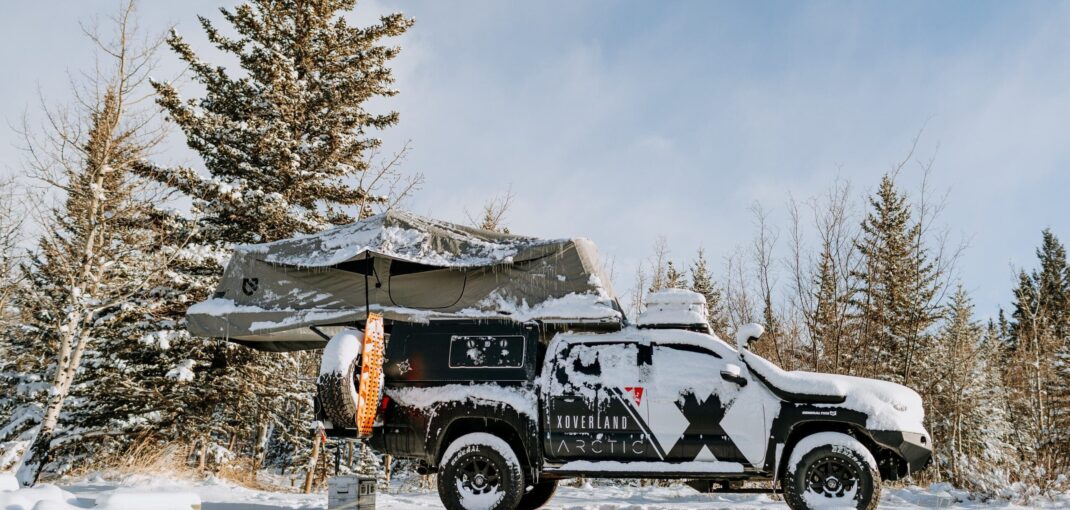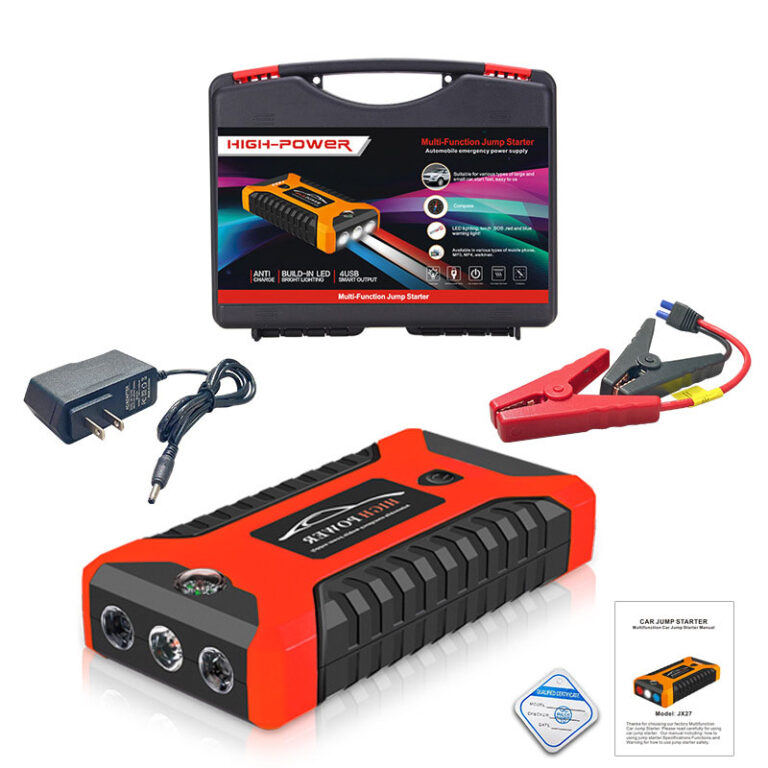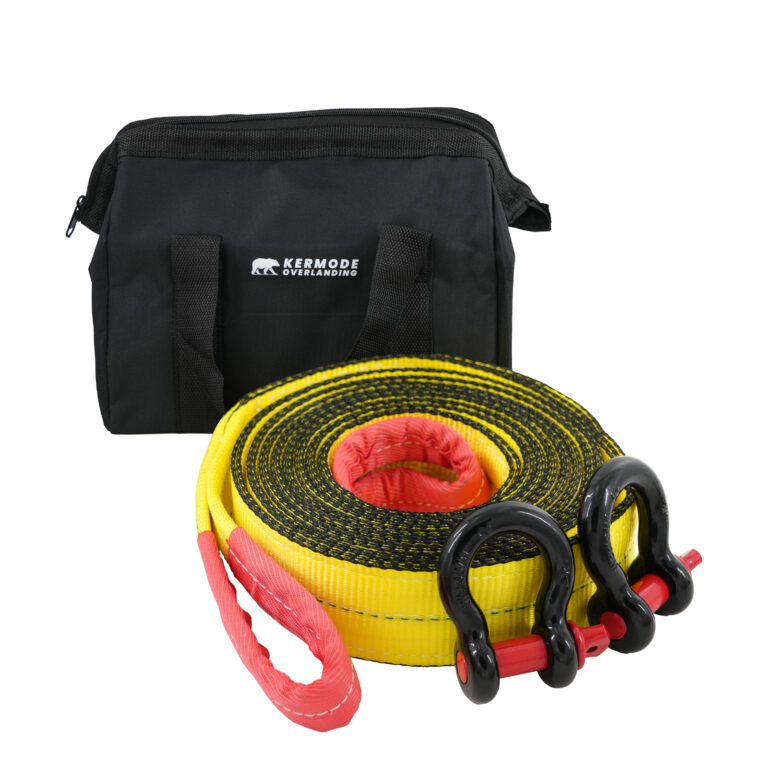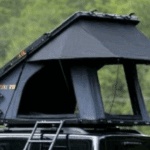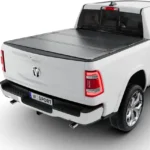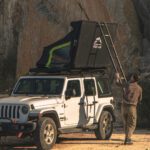Did you know that in both Canada and the United States, nearly 30% of all vehicle collisions occur on wet, snowy, or icy roads, with most incidents happening during the winter months, particularly between November and February?
This article will guide you through the essential gear that overlanders like you and I should have to prevent these situations or deal with them correctly. From recovery tools to cold-weather gear, we’ll cover everything you need to stay safe on the road. We’ll also discuss other common challenges faced during fall and winter overlanding and offer simple solutions to help you avoid these issues altogether. Stay prepared, stay safe, and make your overlanding adventures as enjoyable as possible.
Imagine being stuck on the side of the road for hours, waiting for help because you didn’t have a traction board. Or coming back from a fantastic weekend of overlanding, only to spend the next week sick with a bad cold because your gear wasn’t up to the task. Why let these preventable issues ruin your adventure?
Our answer is simple: Why not make your trip as safe and enjoyable as possible? This guide focuses on essential gear that enhances your experience without breaking the bank. Let’s dive into the must-haves for your fall and winter adventures.
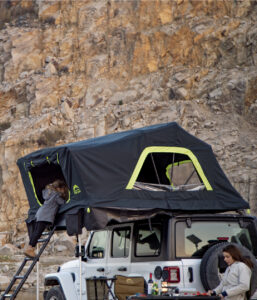
In the following section, we’ll introduce the essential gear to help you tackle the challenges of fall and winter overlanding. These items are crucial for staying safe, warm, and fully prepared for anything the season may bring. Let’s dive into the must-have gear for the colder months ahead.
Disclaimer: Even though we believe in the quality and value of our products, we’ve chosen not to include our brand in the following gear recommendations to keep this guide unbiased and purely informative. However, for transparency, we’ll link our products in each subheading when applicable.
Recovery Gear
1. Traction Boards
Why You Need Them: Traction boards are essential when your vehicle gets stuck in snow, mud, or ice. Without them, you risk spending hours waiting for help or causing damage to your vehicle by trying to power through. With traction boards, you can quickly gain the grip needed to free your tires, keeping your journey on track and your stress levels low.
Price Range: Typically, traction boards range from $150 to $350, depending on the brand and quality.
2. Emergency Light/Lantern
Why You Need It: Emergency lights or lanterns are crucial in low-visibility situations, such as during a snowstorm or when setting up camp in the dark. Without adequate lighting, you might struggle to perform basic tasks or signal for help, increasing the risk of accidents or injuries. With a reliable light source, you can ensure your safety and visibility, making night-time activities much easier.
Price Range: Emergency lights and lanterns typically range from $30 to $150, depending on the features and brand.
- Brands to Consider: Black Diamond, Goal Zero, LuminAID
3. Portable Air Compressor
Why You Need It: A portable air compressor is essential for maintaining the correct tire pressure, especially after navigating through challenging terrains like snow or mud. Without it, underinflated tires could lead to poor traction and handling, making your vehicle more prone to getting stuck or losing control. Keeping your tires properly inflated ensures safer driving and better fuel efficiency.
Price Range: Portable air compressors generally range from $50 to $200, depending on power and portability.
- Brands to Consider: VIAIR, Smittybilt, Slime
4. Tow Strap or Recovery Rope
Why You Need It: When your vehicle or a fellow overlander’s vehicle gets stuck, a tow strap or recovery rope is vital for getting back on the road. Without one, you might have to rely on the goodwill of passersby or wait for roadside assistance, which can be a long and cold wait. Having a reliable tow strap ensures that you can help yourself or others quickly and safely.
Price Range: Tow straps and recovery ropes typically range from $20 to $200, depending on the length and strength.
- Brands to Consider:
- Version 1: Rhino USA, ARB, Bubba Rope.
5. Jump Starter
Why You Need It: Cold weather can drain your vehicle’s battery, leaving you stranded in the middle of nowhere with no way to start your engine. This is especially problematic when you’re far from help, and cell service is limited. Modern jump starters are compact, powerful, and often multifunctional, with capabilities to charge your phone and other electronics or even work as a flashlight. Having a jump starter on hand ensures that you’re never left powerless in an emergency.
Price Range: Jump starters generally range from $70 to $200, depending on the features and power capacity.
Comfort and Protection Gear
1. Annex Room for Wind Protection
Why You Need It: An annex room adds an extra layer of protection against the elements, providing a sheltered space for cooking, relaxing, or changing clothes in privacy. It also helps to keep the cold wind at bay, making your outdoor experience more enjoyable.
Price Range: Typically, annex rooms range from $200 to $600, depending on the size and material.
Brands to Consider:Rhino-Rack, ARB, Dometic
2. Heated Blanket or Sleeping Bag
Why You Need It: Staying warm during cold nights is essential for a good night’s sleep and overall health. Heated blankets and high-quality sleeping bags designed for low temperatures can prevent hypothermia and ensure you’re well-rested for the next day’s adventures.
Material to Look For: Down-filled or synthetic insulation (like PrimaLoft) offers excellent warmth-to-weight ratios. Down is lighter and packs smaller, but synthetic retains heat even when wet.
Price Range: Heated blankets and sleeping bags typically range from $50 to $300, depending on the material and features.
Brands to Consider: Therm-a-Rest, Big Agnes, Kelty
3. Portable Heater
Why You Need It: A portable heater can make a significant difference in your comfort level, especially during cold mornings and evenings. It’s ideal for heating your tent or annex room, ensuring you stay warm and comfortable regardless of the outside temperature.
Safety Note: Ensure your portable heater has safety features like an auto shut-off in case of tipping or low oxygen levels.
Price Range: Portable heaters typically range from $50 to $200, depending on the size and power source.
Brands to Consider: Mr. Heater, Coleman, Buddy Heater
4. Insulated Sleeping Pad
Why You Need It: An insulated sleeping pad provides a barrier between you and the cold ground, significantly improving your sleeping comfort and warmth. It’s a must-have for camping in colder weather to prevent heat loss from below.
Material to Look For: Look for sleeping pads with R-values of 4 or higher for cold-weather camping.
Price Range: Insulated sleeping pads typically range from $50 to $200.
- Brands to Consider: Therm-a-Rest, Sea to Summit, Exped
5. Portable Power Station
Why You Need It: A portable power station ensures you have access to electricity for charging your devices, running lights, or powering your heated blanket. It’s especially useful for extended trips where you may not have access to traditional power sources.
Price Range: Portable power stations typically range from $100 to $500, depending on the capacity and features.
6. Thermal Clothing
Why You Need It: Proper layering with thermal clothing helps retain body heat, allowing you to stay warm and dry even in the harshest conditions. Investing in quality base layers, mid-layers, and outer shells is key to staying comfortable during winter overlanding.
Material to Look For: Merino wool and synthetic fabrics like polyester are excellent for base layers due to their moisture-wicking and insulating properties.
Price Range: Thermal clothing typically ranges from $20 to $150 per item, depending on the material and brand.
- Brands to Consider: Icebreaker, Patagonia, Arcteryx
Overlanding and camping in challenging weather conditions, like snow or heavy rain, require careful preparation to ensure safety and comfort. The gear we’ve discussed in this guide is essential for making your adventures not only possible but enjoyable, even in the toughest terrains. With the right equipment, you can confidently hit the trails, knowing you’re ready for whatever nature throws your way. We hope this guide helps you prepare for your next adventure, ensuring that rain, snow, or any other obstacle won’t stand in the way of your overlanding plans. Stay safe, stay prepared, and happy overlanding!

